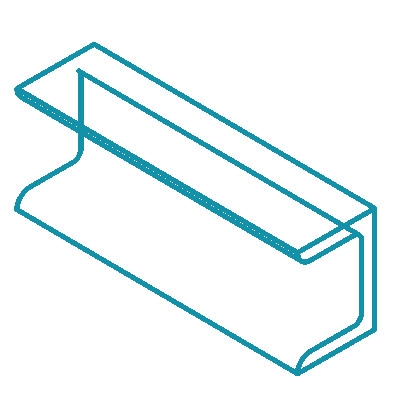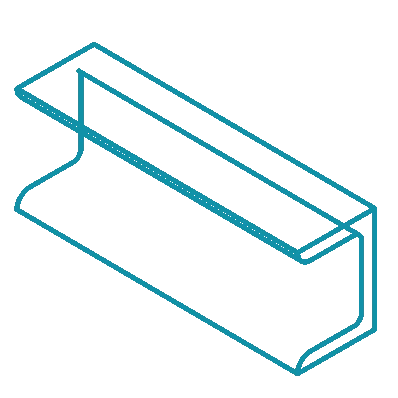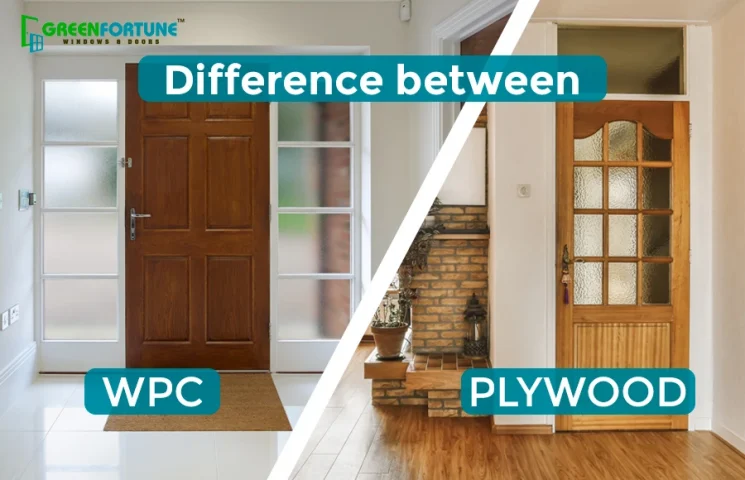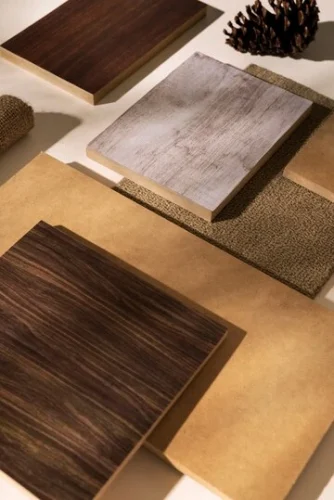
Trendy Window Glass Design Photos to Inspire Your Home Makeover in 2025
January 24, 2025
15 simple temple designs to bring peace and prosperity to your home
January 25, 2025Table of contents
Introduction
Would you believe if I told you there's a type of plywood that is completely termite-proof and also doesn’t get damaged by water? Yes, I am talking about WPC plywood. The layer of this plywood includes plastic composite, and it is totally different from normal plywood.
In this guide, we will understand the in-depth differences between WPC plywood vs normal plywood.
Understand WPC plywood
Let’s first know the concept of WPC plywood. So WPC is a wood-plastic composite, and as the name suggests, it is made by combining wood fiber and various types of thermoplastic, including polyethylene (PE) and polyvinyl chloride (PVC). WPC plywood is different from normal plywood, and it doesn't include only wood fiber but also including plastic composites. WPC plywood image is added below for a clear understanding.
Benefits of WPC plywood
One of the primary benefits of WPC plywood is that it is free from termites and bugs, which are not found in traditional plywood. Some of the other benefits are as follows:
- Highly Durable: Plywoods made from WPc are highly durable, as they can sustain in any climatic conditions. The best part about this material is that it is rot-free and can offer a lifespan of 10 years easily without any damage.
- Low Maintenance: WPC boards do not require frequent staining or oiling, nor do they require chemical treatments to keep insects out.
- Easily Recyclable: WPC plywood is easily recyclable and can be used as an eco-friendly choice for its homeowners.
Difference between WPC and Traditional Plywood
The common difference between WPC and normal plywood is that WPC is bug and termite resistant, whereas normal plywood can be damaged by bugs. Homeowners nowadays prefer WPC over plywood as it gives the guarantee of a long life span without the tension of termites.
You may like: Top 5 Stylish WPC Door Designs for Your Home in 2025
Parameter | WPC (Wood Plastic Composite) | Regular Plywood |
Water Resistance | 100% waterproof, stays intact even in wet areas. | Absorbs water and swells over time. |
Durability | Highly durable, resists wear and tear. | Prone to warping and cracking with time. |
Maintenance | Low-maintenance, easy to clean and care for. | Requires frequent polishing or treatment. |
Strength | Consistent strength, unaffected by water or humidity. | Strong but can weaken with prolonged exposure to moisture. |
Cost Efficiency | Slightly higher cost but economical in the long run. | Cheaper initially but incurs high maintenance costs. |
Final Words
Whether you’re renovating your kitchen or bathroom, WPC provides you comfortability with its benefits of being water and termite resistant. WPC is a preferred choice for homeowners who are looking for strength and durability. It can also be used as various options, like WPC board kitchen design, WPC bathroom and balcony doors, etc.
FAQs on WPC Plywood
What is the price of WPC plywood?
WPC plywood price varies depending on the brand, thickness, and quality. Generally, it ranges between ₹80 to ₹200 per square foot. Check local suppliers for the latest rates.
What is the difference between WPC and marine plywood?
WPC is 100% waterproof, termite-proof, and durable, which makes it low-maintenance. Marine plywood is water-resistant but prone to termite attacks and requires periodic treatment for longevity.
What is WPC plywood?
WPC plywood is a hybrid material made of wood fibers and plastic, offering high durability, waterproofing, and resistance to termites; all these make it an ideal for both interiors and exteriors.
Is WPC 100% waterproof?
Yes, WPC is 100% waterproof, and it is the best choice for areas prone to moisture, such as kitchens, bathrooms, and outdoor furniture.
Which is better: WPC or PVC?
WPC is better for strength, aesthetics, and longevity, especially in furniture and construction. PVC is lighter and more suitable for applications like ceilings or partitions where heavy-duty strength isn’t required.








